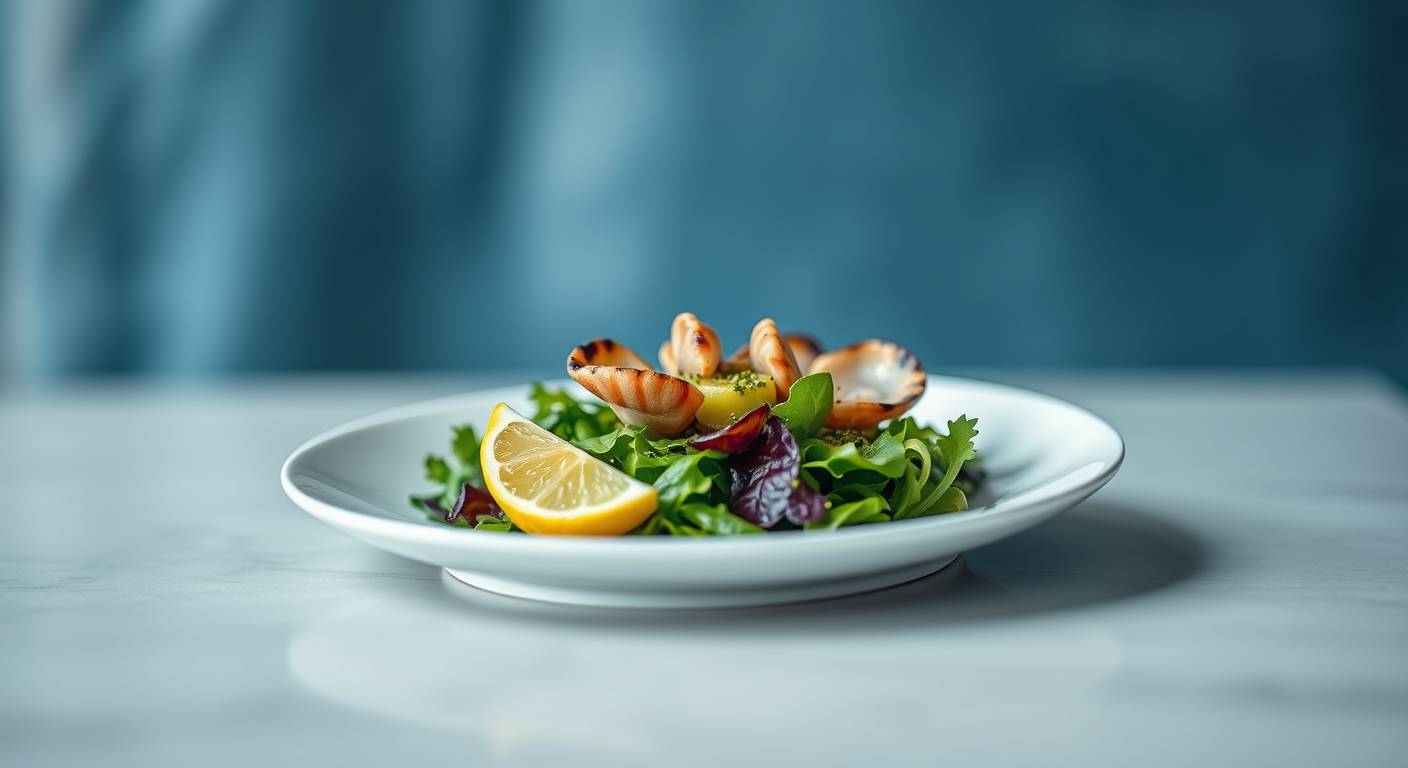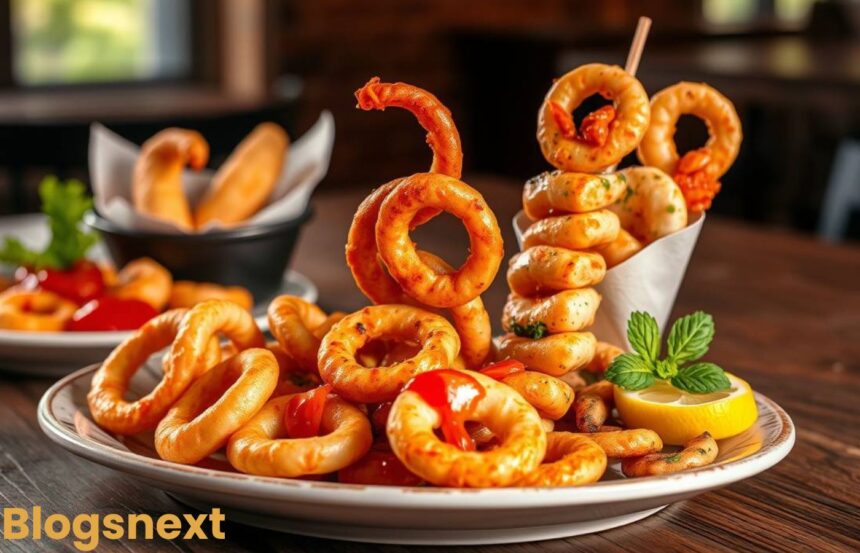Calamariere: A Global Culinary Icon
Calamariere is more than just a seafood dish—it’s a journey across cultures and kitchens. Known for its tender texture and versatile flavor, it has become a staple in cuisines worldwide. From street stalls to fine dining restaurants, calamariere continues to captivate food lovers.
This dish carries a unique cultural story wherever it goes. Whether fried, grilled, or stewed, it adapts beautifully to local flavors. Each version represents the creativity of chefs and the traditions of communities that serve it.
In today’s world, calamariere is not just about taste—it’s about connection. It unites people through shared dining experiences, blending history, culture, and innovation into every plate.
The Origins of Calamariere
Calamariere’s roots trace back to Mediterranean coastal regions. For centuries, fishermen relied on squid as a vital source of food. This simple catch eventually transformed into a refined dish cherished worldwide.
The name itself comes from the Italian word “calamaro,” meaning squid. Over time, regional adaptations gave the dish a global identity. Italy, Spain, and Greece each contributed to making it more than just a seafood recipe.
Today, calamariere stands as a symbol of cultural exchange. Its origins highlight not only a love for seafood but also the ingenuity of turning everyday ingredients into culinary treasures.
-
Derived from Italian “calamaro,” meaning squid.
-
Spread from Mediterranean shores to Asia and beyond.
-
Symbolizes both tradition and cultural innovation.
 Why Calamariere Became Popular Worldwide
Why Calamariere Became Popular Worldwide
The global success of calamariere is no accident. Its versatility allows chefs to experiment with flavors, from mild and buttery to spicy and bold. The dish fits seamlessly into countless dining styles.
Restaurants quickly adopted calamariere because it pairs well with sauces, spices, and sides. It can serve as an appetizer, main course, or tapas-style snack. This adaptability has made it a consistent favorite across cultures.
Another reason for its popularity lies in its texture. When cooked properly, calamariere is tender and delicate, offering a satisfying bite that appeals to all ages.
-
Flexible in cooking methods: fried, grilled, baked, or stewed.
-
Works in casual meals, fine dining, or festive gatherings.
-
Loved for its soft texture and light, clean taste.
Nutritional Value of Calamariere
Beyond taste, it is valued for its nutrition. Squid is a lean protein, making it a healthy choice for seafood lovers. It provides essential nutrients while keeping calories low.
Rich in vitamins and minerals, it supports overall health. Its omega-3 fatty acids promote heart wellness, while its high protein content aids muscle repair. This makes it both delicious and functional.
Balanced diets often include it for its health benefits. Whether grilled for fewer calories or fried for indulgence, it remains a satisfying option.
-
Low in fat but rich in protein.
-
Contains omega-3 fatty acids, vitamin B12, and selenium.
-
Helps maintain heart health and boost immunity.
 Variations of Calamariere Across the World
Variations of Calamariere Across the World
Across the globe, it takes on many delightful forms. Each culture adds its own twist, turning a simple squid into something extraordinary. These versions reflect unique flavors and cooking traditions.
In Italy, it appears as golden-fried rings served with marinara sauce. Japan highlights it as grilled skewers (ikayaki), brushed with soy glaze. Spain embraces calamari as tapas, seasoned lightly and shared socially.
Southeast Asia brings spice into play, marinating it in sambal or chili pastes. Each preparation showcases creativity, proving calamariere’s universal appeal.
-
Italy: Crispy rings with marinara dip.
-
Japan: Street-style grilled ikayaki.
-
Spain: Garlic-parsley seasoned tapas.
-
Southeast Asia: Spicy sambal-marinated squid.
Cooking Methods for Perfect Calamariere
Cooking it can be both simple and complex. The key lies in timing—cook it too long, and it turns rubbery. Handle it right, and you unlock its tender charm.
Frying remains the most popular method, creating crispy exteriors with soft centers. Grilling adds smokiness, while stewing infuses it with rich sauces. Each method highlights different aspects of squid’s character.
Home cooks and chefs alike experiment with marinades and spices. This versatility makes it exciting in kitchens around the world.
-
Frying: Classic golden rings.
-
Grilling: Smoky flavor, often skewered.
-
Stewing: Rich, saucy comfort dish.
-
Baking: Healthier yet flavorful option.
 Pairing Calamariere with Sauces and Sides
Pairing Calamariere with Sauces and Sides
A dish like calamariere shines brightest when paired thoughtfully. Sauces and sides bring out its best qualities, creating balance and depth. The right combination elevates the dining experience.
Mediterranean versions often include tangy marinara or aioli dips. Asian styles pair it with soy-based sauces, while Spanish tapas lean on garlic-infused oils. Each match reflects local culinary traditions.
From fresh salads to crispy fries, sides make calamariere a complete meal. Choosing complementary flavors enhances its delicate taste.
-
Marinara, aioli, or lemon-garlic sauces.
-
Paired with salads, bread, or rice.
-
Complements wine, beer, or refreshing cocktails.
Modern Culinary Innovations with Calamariere
Calamariere has moved beyond traditional recipes and found its place in modern gastronomy. Chefs around the world experiment with fusion dishes that bring fresh excitement to this classic seafood. These innovations keep calamariere relevant in today’s evolving food culture.
From gourmet restaurants to street food festivals, new approaches are shaping how people enjoy calamariere. Creative cooking techniques and global influences offer unique textures and flavors that attract adventurous eaters. This makes calamariere a star dish not only of the past but also the future.
-
Fusion Cuisine – Calamari tacos, calamari pasta, or calamari sushi rolls.
-
Fine Dining – Paired with truffle oil, saffron, or exotic spices.
-
Street Food – Loaded calamari fries or calamari sandwiches.
-
Plant-Based Pairings – Served with vegan dips or gluten-free batters.
 Cultural Significance of Calamariere
Cultural Significance of Calamariere
Calamariere is not just food—it’s culture on a plate. Many regions view it as a symbol of hospitality and shared meals. Festivals and family gatherings often feature it as a centerpiece.
In Mediterranean towns, calamari connects people to the sea and their heritage. In Asia, it represents street food culture and lively markets. Spain’s tapas style emphasizes community and togetherness.
These traditions reveal why calamari is more than a dish. It reflects identity, memory, and belonging across generations.
-
Mediterranean roots tied to fishing heritage.
-
Asian street festivals showcasing squid.
-
Spanish tapas highlighting social connection.
Modern Twists on Calamariere
Today’s chefs push calamari into new territory. Fusion recipes blend global flavors, turning it into something unexpected yet delightful. These innovations keep the dish fresh and exciting.
Creative spins include calamari tacos, squid-ink pasta, and spicy calamari stir-fry. Modern plating styles also elevate its appeal in fine dining. These twists demonstrate the dish’s adaptability.
Such reinventions help calamari stay relevant, attracting younger generations while honoring its roots.
-
Calamari tacos with spicy salsa.
-
Squid-ink pasta with seafood sauce.
-
Stir-fried calamari with Asian spices.
 Health Benefits of Adding Calamariere to Your Diet
Health Benefits of Adding Calamariere to Your Diet
Calamariere is not only flavorful but also beneficial for overall wellness. Modern nutritionists highlight it as a seafood that balances indulgence with health. Its lean protein, vitamins, and minerals make it a smart addition to balanced meals.
Regular consumption can support heart health, brain function, and muscle strength. Low in saturated fats yet rich in omega-3, calamariere fits well in weight-conscious diets. It offers both taste and nourishment, making it a top choice for health-conscious food lovers.
-
Packed with protein for muscle repair.
-
Omega-3 fatty acids support brain and heart.
-
Vitamin B12 and selenium boost immunity.
-
Low calorie, making it ideal for fitness diets.
Tips for Choosing the Best Calamariere in Restaurants
For those dining out, selecting it can be tricky. Not all restaurants prepare it with equal care. Knowing what to look for ensures a fresh, delicious, and memorable experience.
Freshness is the first priority. High-quality calamariere should smell clean, not fishy. Preparation methods also matter—overcooking can ruin its tenderness. Smart diners check menu descriptions and reviews before ordering.
By following simple tips, food lovers can enjoy it at its very best, no matter the setting.
-
Look for clear, golden fried rings or evenly grilled pieces.
-
Ask if the squid is fresh, not frozen.
-
Pair with house sauces for unique flavors.
-
Choose trusted restaurants with seafood expertise.
 Sustainability and Sourcing of Calamariere
Sustainability and Sourcing of Calamariere
Today’s diners care not just about flavor but also about how food is sourced. Calamariere, like other seafood, is connected to sustainability conversations worldwide. Responsible harvesting ensures the dish remains available for future generations.
Sustainable fishing practices protect ocean ecosystems and maintain healthy squid populations. Many coastal communities depend on squid fishing for their livelihood, so ethical sourcing also supports local economies. Consumers can make better choices by asking about origins and certifications when buying or dining out.
-
Look for labels like MSC (Marine Stewardship Council).
-
Support restaurants that highlight sustainable seafood.
-
Prefer local sources to reduce environmental impact.
-
Stay informed about seasonal availability.
FAQs About Calamariere
Is calamariere the same as calamari?
Not exactly. Calamari refers broadly to squid dishes, while calamariere highlights a particular cultural adaptation with unique styles.
What is the best way to cook calamari at home?
Frying and grilling are the most popular. Keep cooking time short—about 2–3 minutes—for a tender result.
Is calamariere healthy?
Yes, when prepared with minimal oil. It offers lean protein, omega-3 fatty acids, and essential vitamins.
Why does calamariere sometimes taste rubbery?
Overcooking is the main reason. Squid needs either very quick cooking or long slow stewing for tenderness.
What wine pairs best with calamariere?
Crisp white wines like Sauvignon Blanc or Pinot Grigio complement its light flavors beautifully.
Conclusion
Calamariere is more than seafood—it’s a cultural bridge connecting traditions across the world. From Mediterranean coasts to Asian markets, it adapts and thrives. Its variations reflect the beauty of culinary diversity.
Whether fried, grilled, or reinvented with modern flair, calamari remains beloved. Its nutritional value, rich history, and ability to bring people together secure its place as a timeless favorite.
For anyone seeking a dish that unites flavor with heritage, calamari is a perfect choice.









